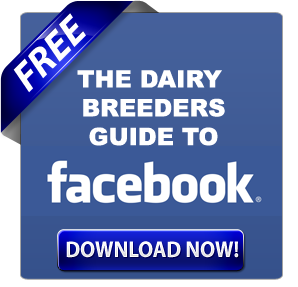FDA Sampling vs. Cornell Study: What Dairy Farmers Need to Know
EXECUTIVE SUMMARY: A groundbreaking Cornell study reveals H5N1’s unexpected survival in lab-made raw cheese aged 60 days, challenging FDA safety assumptions. Meanwhile, FDA testing of 96 commercial raw cheese samples found no detectable virus, while 464 pasteurized products also tested clean. Two avian flu strains – B3.13 (cattle-poultry spread) and D1.1 (wild bird spillover) – pose distinct risks, with B3.13 causing severe illness and D1.1 triggering milder cases. Researchers highlight pH ≤5.0 and heat treatment (54°C/15 mins or 60°C/10 secs) as virus-killing solutions. The FDA’s ongoing sampling will determine if commercial cheeses harbor risks while states like New York ramp up surveillance. Farmers must balance lab findings with real-world data to protect herds and consumers.
KEY TAKEAWAYS
- Cornell Study Challenges Aging Safety: H5N1 survives 60 days in pH 5.8–6.6 cheeses but dies in ≤5.0 acidity.
- FDA Sampling: No Virus Detected: 96 raw cheese samples and 464 pasteurized products tested clean as of March 2025.
- Strain Safety: B3.13 vs D1.1:
- B3.13: Lateral spread between cattle/poultry; severe illness.
- D1.1: Wild bird spillover; milder symptoms.
- Proven Solutions: Target pH ≤5.0 or heat-treat raw milk to kill H5N1.
- Biosecurity Critical: Wildlife control and hygiene protocols remain frontline defenses, especially in H5N1-free states.

While Cornell researchers reveal H5N1’s surprising survival in lab-made raw cheese, the FDA’s ongoing marketplace sampling shows no detectable virus in commercially sold aged raw cheese. This tension between lab findings and real-world results underscores the complexity of food safety in a post-avian-flu world.
Cornell’s Lab Bombshell
In a preprint study funded by the FDA and New York State, researchers spiked raw milk with H5N1 and made mini-cheeses at three pH levels (6.6, 5.8, 5.0). The results? The viable virus survived 60 days of aging in cheeses with pH 5.8–6.6 – but vanished in the most acidic (pH 5.0) batch. This directly challenges the FDA’s 1949 rule requiring raw milk cheese to age 60 days at ≤35°F (1.7°C) to kill pathogens.
But the FDA’s Marketplace Reality Check
As of March 10, 2025, the FDA has:
| Category | Number | Status |
| Raw cheese samples | 110 | Collected |
| Raw cheese tested | 96 | Negative |
| Raw cheese pending | 14 | In progress |
| Pasteurized products | 464 | Tested clean |
| Parameter | Lab Findings | Marketplace Data |
| pH 6.6–5.8 | Virus survives aging | No positives in 96 tested samples |
| pH ≤5.0 | Virus inactivated | N/A (no commercial data) |
| Pasteurization | Inactivates virus | 464 products tested clean |
THE STRAIN SHOWDOWN: B3.13 VS D1.1
Two avian flu strains are rewriting the rules for dairy safety – and they behave very differently.
| Strain | Hotspots | Transmission | Impact on Cows |
| B3.13 | California, Idaho | Lateral spread (farm-to-farm) | Severe clinical illness |
| D1.1 | Nevada, Arizona | Wild bird spillover | Milder symptoms |
Why This Matters
- B3.13 acts like a cattle-poultry ping-pong ball, jumping between species and spreading rapidly.
- D1.1 – the dominant wild bird strain – seems to land and stay, causing sporadic dairy outbreaks without farm-to-farm spread.
HEAT TREATMENT: THE VIRUS KILLER
While aging alone may fail, heat treatment emerges as a reliable solution.
| Parameter | Temperature | Duration | Effect |
| Low-temperature | 54°C (130°F) | 15 minutes | Inactivates H5N1 |
| High-temperature | 60°C (140°F) | 10 seconds | Inactivates H5N1 |
This data aligns with FDA recommendations for heat-treating raw milk to ensure virus inactivation.
THE CHEESE SAFETY DEBATE: WHAT FARMERS NEED TO KNOW
Raw milk cheese producers face a pH puzzle. The Cornell study shows:
- pH 6.6–5.8: Virus survives aging.
- pH ≤5.0: Virus dies during cheese-making.
Practical Takeaways
- Adjust your pH: Target ≤5.0 to kill H5N1.
- Heat it: Treat raw milk to 54°C (130°F) for 15 mins or 60°C (140°F) for 10 seconds.
- Stay vigilant: Even with these steps, biosecurity remains critical – especially in virus-free regions.
FDA’S NEXT MOVES: WHAT TO WATCH
The H5N1-cheese saga is far from over. Here’s what to watch:
- Final sampling results: Will the remaining 200 cheese samples turn up positive?
- Regulatory shifts: Could aging requirements tighten?
- Strain evolution: How will B3.13/D1.1 mutate?
New York’s Proactive Play
Following Cornell’s findings, New York State is:
- Developing an updated surveillance strategy for raw milk used in cheese production
- Testing raw milk bulk tanks during inspections
- Coordinating with USDA, FDA, and national dairy organizations to enhance detection.
VALIDATED FINDINGS: COMMERCIAL CHEESE SURVIVAL
Cornell’s study analyzed commercial cheddar cheese inadvertently made with H5N1-contaminated milk:
| Parameter | Value | Observation |
| pH | 5.37 ± 0.06 | Virus survived 60 days of aging |
| Aging duration | 60 days | Infectious virus detected at end |
| Viral load | 4.0 ± 0.58 log EID50/g | Consistent infectivity throughout |
This real-world validation confirms lab findings about H5N1’s persistence in pH 5.3–5.8 cheeses.
BOTTOM LINE: WHAT DAIRY FARMERS & CONSUMERS NEED TO KNOW
For Raw Cheese Producers
- pH matters: Target ≤5.0 or heat-treat raw milk to ensure safety.
- Biosecurity first: Wildlife control and hygiene protocols remain critical.
For Consumers
- No confirmed risks: The FDA hasn’t detected H5N1 in 96 tested samples.
- Check labels: Opt for pasteurized products if concerned.
For Dairy Workers
- Protect yourself: Avoid direct contact with raw milk – splashes to eyes/mouth pose infection risks.
While the Cornell study raises red flags, real-world data mocks the alarm bells. For now:
- Raw cheese producers: Double-check pH/heat protocols.
- Consumers: No evidence yet to avoid raw cheese.
- All farmers: Biosecurity isn’t optional – it’s essential.
Stay Sharp
This story’s evolving. Follow The Bullvine for updates – and keep your herd’s defenses locked tighter than a cheese aging cave.
Read more:
- Avian Flu Hits Nevada Dairy Cows: Industry on High Alert
Covers Nevada’s HPAI outbreak, quarantine measures, and USDA testing programs. - How H5N1 Exposed Dairy’s Vulnerability While Threatening Your Bottom Line
Details Cornell’s research on $737,500 herd losses, rapid viral spread, and biosecurity gaps. - Avian Influenza Outbreak: Latest Developments in U.S. Dairy Industry – January 22nd, 2025
Updates on 17-state herd impacts, milk production drops, and federal response strategies.
 Join the Revolution!
Join the Revolution!
Join over 30,000 successful dairy professionals who rely on Bullvine Daily for their competitive edge. Delivered directly to your inbox each week, our exclusive industry insights help you make smarter decisions while saving precious hours every week. Never miss critical updates on milk production trends, breakthrough technologies, and profit-boosting strategies that top producers are already implementing. Subscribe now to transform your dairy operation’s efficiency and profitability—your future success is just one click away.







 Join the Revolution!
Join the Revolution!



